Hansong(Nanjing) Technology XCO-CRESCENDOX Manuel utilisateur
- Catégorie
- Équipement musical supplémentaire
- Taper
- Manuel utilisateur
Ce manuel convient également à

user’s manual
®

2
IMPORTANT SAFETY INSTRUCTIONS!
1 Read these instructions.
2 Keep these instructions.
3 Heed all warnings.
4 Follow all instructions.
5 Do not use this apparatus near water.
6 Clean only with dry cloth.
7 Do not block any ventilation openings. Install in accordance with the manu-
facturer’s instructions.
8 Do not install near any heat sources such as radiators, heat registers, stoves,
or other apparatus (including amplifiers) that produce heat.
9 Do not defeat the safety purpose of the polarized or grounding-type plug. A
polarized plug has two blades with one wider than the other. A grounding
type plug has two blades and a third grounding prong. The wide blade or
the third prong are provided for your safety. If the provided plug does not fit
into your outlet, consult an electrician for replacement of the obsolete outlet.
10 Protect the power cord from being walked on or pinched, particularly at
plugs, convenience receptacles, and the point where they exit from the
apparatus.
11 Only use attachments/accessories specified by the manufacturer.
12 Use only with the cart, stand, tripod, bracket, or
table specified by the manufacturer, or sold with
the apparatus. When a cart is used, use caution
when moving the cart/apparatus combination to
avoid injury from tip-over.
13. Unplug this apparatus during lightning storms or
when unused for long periods of time.
14. Refer all servicing to qualified service personnel. Servicing is required when
the apparatus has been damaged in any way, such as power-supply cord
or plug is damaged, liquid has been spilled or objects have fallen into the
apparatus, the apparatus has been exposed to rain or moisture, does not
operate normally, or has been dropped.
15. To completely disconnect this equipment from the AC mains, disconnect the
power supply cord plug from the AC receptacle.
16. The mains plug of the power supply cord shall remain readily operable.
17 CAUTION: Danger of explosion if battery is incorrectly replaced. Replace only
with the same or equivalent type (AAA). Dispose of dead batteries in accor-
dance with local regulation.
18. To prevent overheating, do not cover the apparatus. Install in accordance
with the manufacturer’s instructions.
19. No naked flame sources, such as candles, should be placed on the product.
20. Do not expose this apparatus to dripping or splashing and ensure that no
objects filled with liquids, such as vases, are placed on the apparatus.
21. Batteries (battery pack or batteries installed) shall not be exposed to exces-
sive heat such as sunshine, fire, or the like.
22. For apparatus mounted to wall, the apparatus shall be installed on solid
wood, bricks, concrete or solid wood columns and battens.
23. DO NOT overload wall outlets or extension cords beyond their rated capacity
as this can cause electric shock or fire.
24. Minimum distances around the apparatus for sufficient ventilation.
25. The ventilation should not be impeded by covering the ventilation openings
with items, such as newspapers, tablecloths,curtains, etc.
26. Do not ingest the battery, Chemical Burn Hazard.
27. Keep new and used batteries away from children.
28. If the battery compartment does not close securely, stop using the product
and keep it away from children.
29. If you think batteries might have been swallowed or placed inside any part of
the body, seek immediate medical attention.
30. The battery (battery or batteries or battery pack) shall not be exposed to
excessive heat such as sunshine, fire or the like.
31. Risk of leakage. Only use the specified type of Batteries. Never mix new and
used batteries. Observe correct polarity. Remove batteries from products that
are not in use for extended periods of time. Store batteries in a dry place.
32. Do not recharge non-rechargeable batteries.
33. Avoid exposure to extreme heat or cold.
34. This equipment is a Class II or double insulated electrical appli-
ance. It has been designed in such a way that it does not require
a safety connection to electrical earth.
35. Danger of explosion if battery is incorrectly replaced. Replace only with the
same or equivalent type.
36. (The remote control supplied with) This product contains a AAA battery. If the
AAA battery is swallowed, it can cause severe internal burns in just 2 hours
and can lead to death.
37. Do not handle leaking or damaged AAA batteries.
The lightning bolt flash with arrowhead
symbol within an equilateral triangle,
is intended to alert the user to the pres-
ence of potentially “dangerous voltage” within the
product’s enclosure that may be of sufficient magni-
tude to constitute a risk of electric shock to persons.
The exclamation point within an equi-
lateral triangle is intended to alert the
user to the presence of important oper-
ating and maintenance (servicing) instructions in the
literature accompanying the appliance.
Do Not Open! Risk of Electrical Shock. Voltages in this equip-
ment are hazardous to life. No user-serviceable parts inside.
Refer all servicing to qualified service personnel. To prevent fire
or shock hazard, do not expose this module to rain or moisture.

3
38. THIS PRODUCT CONTAINS A AAA BATTERY. IF MISUSED OR ABUSED THIS
CAN RESULT IN:
- Smoke or gas hazard
- Heat hazard
- Fire hazard
- Explosion hazard
39. If an appliance coupler is used as the disconnect device, the disconnect
device shall remain readily operable.
The rating for the USB output is 5V
2.1A.
WARNING: This product is intended to be operated ONLY from the AC Voltages
listed on the back panel or included power supply of the product. Operation from other
voltages other than those indicated may cause irreversible damage to the product
and void the product warranty. The use of AC Plug Adapters is cautioned because
it can allow the product to be plugged into voltages in which the product was not
designed to operate. If the product is equipped with a detachable power cord, use
only the type provided with your product or by your local distributor and/or retailer. If
you are unsure of the correct operational voltage, please contact your local distributor
and/or retailer.
This device complies with Part 15 of the FCC Rules. Operation is subject to the follow-
ing two conditions: (1) This device may not cause harmful interference, and (2) this
device must accept any interference received, including interference that may cause
undesired operation.
FEDERAL COMMUNICATIONS COMMISSION INTERFERENCE
STATEMENT: This equipment has been tested and found to comply with the limits
for a Class B digital device, pursuant to part 15 of the FCC Rules. These limits are
designed to provide reasonable protection against harmful interference in a residential
installation. This equipment generates, uses and can radiate radio frequency energy
and, if not installed and used in accordance with the instructions, may cause harmful
interference to radio communications. However, there is no guarantee that interfer-
ence will not occur in a particular installation. If this equipment does cause harmful
interference to radio or television reception, which can be determined by turning the
equipment off and on, the user is encouraged to try to correct the interference by one
or more of the following measures:
• Reorient or relocate the receiving antenna.
• Increase the separation between the equipment and receiver.
• Connect the equipment into an outlet on a circuit different from that to which
the receiver is connected.
• Consult the dealer or an experienced radio/TV technician for help.
Approved under the verification provision of FCC Part 15 as a Class B Digital Device.
Any changes or modifications not expressly approved by the grantee of this device
could void the user’s authority to operate the equipment.
RF EXPOSURE WARNING: This equipment must be installed and operated in
accordance with provided instructions and the antenna(s) used for this transmitter
must be installed to provide a separation distance of at least 20 cm from all per-
sons and must not be co-located or operating in conjunction with any other antenna
or transmitter. End-users and installers must be provide with antenna installation
instructions and transmitter operating conditions for satisfying RF exposure compli-
ance.
5GHz RF DEVICE STATEMENT: This device operates in the 5.15–5.25GHz
frequency range and is restricted to indoor use only. Outdoor operations in the 5150–
5250MHz frequency range is prohibited.
CANADA, INDUSTRY CANADA (IC) NOTICES: This device complies with
Industry Canada licence-exempt RSS standard(s). Operation is subject to the following
two conditions: (1) this device may not cause interference, and (2) this device must
accept any interference, including interference that may cause undesired operation
of the device.
Under Industry Canada regulations, this radio transmitter may only operate using
an antenna of a type and maximum (or lesser) gain approved for the transmitter by
Industry Canada. To reduce potential radio interference to other users, the antenna
type and its gain should be so chosen that the equivalent isotropically radiated power
(e.i.r.p.) is not more than that necessary for successful communication.
This radio transmitter (certification number: 7756A-CRESCENDOX) has been approved
by Industry Canada to operate with the antenna types listed below with the maximum
permissible gain and required antenna impedance for each antenna type indicated.
Antenna types not included in this list, having a gain greater than the maximum gain
indicated for that type, are strictly prohibited for use with this device.
Gain of antenna: 4.2dBi max.
Type of antenna: 50ohm, PIFA
RADIO FREQUENCY (RF) EXPOSURE INFORMATION: The radiated output
power of the Wireless product is below the Industry Canada (IC) radio frequency
exposure limits. The Wireless product should be used in such a manner such that the
potential for human contact during normal operation is minimized. This device has
also been evaluated and shown compliant with the IC RF Exposure limits under mobile
exposure conditions. (antennas are greater than 20cm from a person’s body).
Caution: (i) The device operating in the band 5150–5250 MHz is only for indoor use
to reduce the potential for harmful interference to co-channel mobile satellite systems;
(ii) The maximum antenna gain permitted for devices in the bands 5250–5350 MHz
and 5470–5725 MHz shall comply with the e.i.r.p. limit; and (iii) The maximum
antenna gain permitted for devices in the band 5725–5825 MHz shall comply with
the e.i.r.p. limits specified for point-to-point and non point-to-point operation as
appropriate. (iv) Users should also be advised that high-power radars are allocated
as primary users (i.e. priority users) of the bands 5250–5350 MHz and 5650–5850
MHz and that these radars could cause interference and/or damage to LE-LAN devices.
(iv) the worst-case tilt angle(s) is compliant with the e.i.r.p. elevation mask require-
ment set forth in Section 6.2.2(3).

4
WEEE NOTICE
Note: This mark applies only to countries within the European
Union (EU) and Norway.
In accordance with the European Union WEEE (Waste Electrical and Electronic
Equipment) directive 2002/96/EC effective August 13, 2005, we would like to
notify you that this product may contain regulated materials which upon disposal,
according to the WEEE directive, require special reuse and recycling processing.
For this reason Martin Logan has arranged with our distributors in European
Union member nations to collect and recycle this product at no cost to you.
To
find your local distributor please contact the dealer from whom you purchased
this product, email [email protected] or visit the distributor locator at
www.martinlogan.com.
Please note, only this product itself falls under the WEEE directive. When dis-
posing of packaging and other related shipping materials we encourage you to
recycle these items through the normal channels.
WARNING/CAUTION!
• Hazardous voltages exist inside—do not remove cover.
• Refer servicing to a qualified technician.
• To prevent fire or shock hazard, do not expose this module to moisture.
• Unplug speaker should any abnormal conditions occur.
• Turn speaker off before making or breaking any signal connections!
• The power cord should not be installed, removed, or left detached from the
speaker while the other end is connected to an AC power source.
• No candles or other sources of open flame should be placed on the speaker.
• No liquids either in glasses or vases should be placed on speaker.
• Speaker should not be exposed to dripping or splashing liquids.
• The terminals marked with the lightning bolt symbol should be connected by
an instructed person or by way of ready made terminals.
• The power cord should remain readily operable should any abnormal
conditions occur.
• Any changes or modifications not expressly approved by the grantee of this
device could void the user’s authority to operate the equipment.
AirPlay, iPad, iPhone, iPod, iPod classic, iPod nano, and iPod touch are
trademarks of Apple Inc., registered in the U.S. and other countries.
AirPlay works with iPhone, iPad, and iPod touch with iOS 4.3.3 or later,
Mac with OS X Mountain Lion, and Mac and PC with iTunes 10.2.2 or later.
iPad mini, iPod touch (3rd through 5th generation), and iPod nano (5th
through 7th generation). “Made for iPod,” “Made for iPhone,” and “Made
for iPad” mean that an electronic accessory has been designed to connect
specifically to iPod, iPhone, or iPad, respectively, and has been certified by
the developer to meet Apple performance standards. Apple is not respon-
sible for the operation of this device or its compliance with safety and
regulatory standards. Please note that the use of this accessory with iPod,
iPhone, or iPad may affect wireless performance.
Made for:
• iPhone 6 Plus
• iPhone 6
• iPhone 5s
• iPhone 5c
• iPad Air 2
• iPad mini 3
For DTS patents, see http://patents.dts.com. Manufactured under license
from DTS, Inc. DTS, Play-Fi, the Symbol, and Play-Fi together in combi-
nation with the Symbol are trademarks of DTS, Inc. DTS and Play-Fi are
registered trademarks of DTS, Inc. © DTS, Inc. All Rights Reserved.
Apple and the Apple logo are trademarks of Apple Inc., registered in the U.S.
and other countries. App Store is a service mark of Apple Inc.
The Spotify software is subject to third party licenses found here:
www.spotify.com/connect/third-party-licenses
The Bluetooth word mark and logos are registered trademarks owned by
Bluetooth SIG, Inc. and any use of such marks by MartinLogan, Ltd. is under
license.
Windows is a registered trademark of Microsoft Corporation in the United
States and other countries.
Other trademarks and trade names are those of their respective owners.

5
Introduction and Overview ...............7
Placement ...........................7
Connection ..........................7
Power Connection ...................7
Signal Connection ...................7
Network Connection .................8
Subwoofer Connection ................8
An Overview of Connections .............9
Volume Behavior by Input ...............9
Controls ...........................11
Front Panel Controls .................11
Remote Control ....................12
Changing the Remote’s Batteries .........12
Control Functions by Input ..............13
Playing Audio Using Play-Fi
®
............13
Automatic Input Selection ..............13
Playback – From the DTS Play-Fi App ......13
Controlling Multiple Speakers ...........14
Additional Play-Fi Features .............14
Playing Audio Using AirPlay
®
............14
Automatic Input Selection ..............14
Playback – From an Apple
®
iOS Device ....14
Playback – From iTunes
®
on a Mac or PC ..14
Controlling Playback Using iTunes ........15
How to use Connect ...................15
DTS Play-Fi and Apple AirPlay Setup ......15
Network Requirements ...............15
DTS Play-Fi App Requirements ...........15
Apple AirPlay Requirements ............16
Wi-Fi Status Light ...................16
Downloading the DTS Play-Fi App ........16
Connecting to a Wireless Network:
Access Point Setup .................16
Audio Streaming Usage Guide ..........16
Connecting to a Wireless Network:
Wi-Fi Protected Setup (WPS) ..........18
Connecting to a Wired Network ........18
Apple AirPlay Setup (Without DTS App) ....18
Bluetooth
®
Connection .................19
Updates and Rebooting ................20
DTS Play-Fi App Update ..............20
DTS Play-Fi Module Update ............20
MartinLogan Firmware Update ..........20
Rebooting ........................20
Factory Reset ......................20
Removing the Front Grille ...............20
Contacting Customer Service ............20
General Information ..................20
Warranty Information ................20
Serial Number .....................21
Service .........................21
Frequently Asked Questions .............21
Troubleshooting ...................... 22
Specifications .......................24
Dimensional Drawings .................25
Serial Number:_____________________________
Record your serial number here for easy reference.
You will need this information when filling out your
warranty registration. The serial number is located on
the back of the speaker and on the product carton.

6

7
IntroductIon and overvIew
Placement
Thank you—the MartinLogan owner, for loving what we
do, and making it possible for us to do what we love.
MartinLogan’s dedicated in-house engineering and
design team developed the Crescendo X speaker to
deliver exceptional audio performance from a single
system, easily integrated and installed in a diverse
variety of environments. The Crescendo X produces an
enveloping field of richly detailed audio incorporating
two tweeters (featuring MartinLogan’s award-winning
Folded Motion technology), a high-performance woofer,
and three channels of dedicated class-D amplification
representing 100 watts of total system power.
An advanced 24-bit 48kHz DSP (digital signal pro-
cessing) based pre-amplifier allows MartinLogan to
replace dedicated stereo speakers with a one piece
solution, capable of reproducing sound with unflinch-
ing accuracy, resolution, and detail—the inspiration
behind every MartinLogan design. Additionally, for
a fully authentic audio experience, the Crescendo X
makes connecting a dedicated subwoofer as simple
as the push of a button.
The Crescendo X’s remote control quickly adjusts
volume, selects inputs, and controls your media. The
remote also allows you to easily switch between
two discrete acoustic modes—‘Bass +’ mode (for
those moments requiring a little extra thunder) and a
‘Normal’ mode that restores normal levels.
We recommend locating the speaker on a surface
that provides a wide, level, and stable platform
such as a table or audio/video rack. Please note,
this speaker is not magnetically shielded and there-
fore should not be placed directly beneath or on
top of a CRT (cathode ray tube) television. The
magnetic field of the speaker will not affect plasma
and LCD style televisions.
connectIon
POWER CONNECTION
The power cord should be firmly inserted into the
AC power receptacle on the rear of the speaker,
and then to any convenient AC wall outlet.
If you remove your speaker from the country of
original sale, be certain that the AC power sup-
plied in any subsequent location is suitable
before connecting and operating the speaker.
Substantially impaired performance or severe
damage may occur to the speaker if operation is
attempted from an incorrect AC power source.
When the Power button on the back panel is set
to ‘Off’ the speaker is completely powered down,
including all network connections (Wi-Fi and
Ethernet are deactivated).
SIGNAL CONNECTION
Connections are made at the signal input section
WARNING! Turn your speaker off
before making or breaking any sig-
nal connections! WARNING! The
power cord should not be installed,
removed, or left detached from the speaker while
the other end is connected to an AC power source.

8
on the rear electronics panel of the speaker. Your
speaker features the following audio inputs:
• Ethernet: used for streaming audio from Apple
AirPlay or DTS Play-Fi
®
.
• Aux [Auxiliary]: used for either digital optical
(Toslink) or analog input. This input will accept
either a standard 3.5mm stereo headphone
style or mini-Toslink plug. A special mini-Tos-
link to Toslink cable or mini-Toslink adaptor is
required for digital optical connection.
In addition, the speaker features two inputs that do
not require a physical connection:
• Wireless: used for streaming audio from Apple
AirPlay or Play-Fi
®
.
• Bluetooth: used for streaming from compatible
Bluetooth equipped devices, including aptX
®
Bluetooth devices.
Please note, when utilizing this speaker to reproduce
audio from a television via the speaker’s Auxiliary
(digital or analog) connection, the television’s audio
output should be defeated. Some televisions will
allow you to turn off the internal speaker via the
television’s menu system. Other televisions may
require you to turn the television’s volume to “zero”
or “mute.” Additionally, your television may require
you to turn on the digital optical output or and/or
configure the output for 2-channel (stereo) sound.
Please refer to your television’s manual.
NETWORK CONNECTION
To stream audio to your speaker, a LAN (local
area network) connection is required. This connec-
tion can be established using Wi-Fi or Ethernet.
Refer to the wireless setup section of this manual for
setup and usage details.
SUBWOOFER CONNECTION
You may choose to employ a separate subwoofer
to enhance bass performance. Subwoofers can
be connected via the speaker’s “Sub Out” RCA
connection. We recommend using a superb
MartinLogan subwoofer.
Using a high-quality RCA style cable designed for
subwoofer connection, connect “Sub Out” from the
speaker to the “LFE In/Sub In” on the subwoofer.
On the back panel of the speaker, set the Sub
Out button to “On” (in its “on” state the button will
be depressed—in its “off” state the button will be
extended). When the Sub Out is turned on, the
deep bass output of the speaker will be reduced
(to optimize performance) and bass information will
be sent directly to your external subwoofer for a
deeper, extended, overall bass response.
Reference your subwoofer’s manual to learn how
to properly adjust the sub’s level and phase con-
trols to achieve proper blending with the speaker.
When Sub Out is set to “On,” the speaker will
handle the crossover setting to the subwoofer,
Fig. 1 Connection Panel

9
achieving ideal blending with the speaker.
Because of this, the subwoofer’s crossover should
be set to “bypass” or “LFE.” For subwoofers that
do not have a “bypass” or “LFE” crossover setting,
we recommend adjusting the crossover to its high-
est setting—remember, the speaker will handle the
crossover before sending out the sub signal.
Using a MartinLogan Dynamo Subwoofer:
If using a MartinLogan Dynamo family subwoofer,
we recommend beginning with the following sub-
woofer settings:
• Low-pass: Bypass
• Phase: 0
• Volume: Knob set to vertical (12-o’clock to
1-o’clock position)
Digital Optical: Also referred to as Toslink, this cable utilizes one cable to pass digital
audio information (no video). A digital optical cable offers a high-quality digital
connection and passes multi-channel encoded audio between a source compo-
nent and an audio output device. The Auxiliary input on this speaker accepts
digital optical connection with the use of a mini-Toslink adaptor (included with
this speaker). Toslink to mini-Toslink cables may also be available from your dealer.
Left/Right Analog RCA: These cables are used to pass audio information (no
video). An analog RCA cable can only pass a single channel of audio infor-
mation between a source component and audio output device. To achieve
two-channels of audio (left/right), you will find that analog RCA cables come
bundled as a stereo pair (two connectors on each end). The Auxiliary input
on this speaker can accept an analog stereo signal through a cable using a
3.5mm stereo “headphone style” jack. If you are connecting this speaker to a device (such as a dock
or CD player) with left/right RCA analog outputs, you will need a special cable with a 3.5mm ‘head-
phone style’ jack on one end and left/right RCA jacks on the other end.
Left/Right Analog 3.5mm Stereo “Headphone Style” Jack: This cable is used to pass
audio information (no video). Users may find source components such as digital
media players and docks utilize a 3.5mm ‘headphone style’ connector. The
Auxiliary input on this speaker can accept an analog stereo signal through a
cable using a 3.5mm “headphone style” connector. These devices also have a
“volume control” that increases or decreases the level of the output signal.
If you are connecting a device
which allows volume adjustment (like a digital media player or cell phone), we recommend the volume on
the device not be set to maximum. When the volume is set to its maximum setting, the amplifier in the external
device is likely to introduce elevated distortion into the audio signal which, in turn, will be passed on to this
speaker and further amplified, creating even more distortion.
an overvIew of connectIons

10
an overvIew of connectIons [contInued]
Ethernet: This cable allows you to physically connect a device to a LAN (local area
network). When connected to a LAN, audio information can be sent to this
speaker using various protocols (such as Play-Fi
®
or AirPlay). If a wireless (Wi-
Fi) connection is used to connect to a LAN, there is no need to use an
Ethernet connection. However, in some installations, a ‘hard-wired’ Ethernet
connection may prove more desirable than a wireless connection.
Wi-Fi: This connection technology wirelessly connects a device to a LAN (local area
network). When connected to a LAN, audio information can be sent to this speaker using
various protocols (such as Play-Fi or AirPlay). If an Ethernet connection is used to connect
to a LAN, there is no need to use a Wi-Fi connection. In some installations a ‘hard-wired’ Ethernet
connection may prove more desirable than a wireless connection.
Bluetooth: This wireless connection technology allows a wide variety of devices to connect
to an audio output device and stream audio. Bluetooth establishes a connection directly
with an audio output device and does not require either device to be connected to a LAN.
volume BehavIor By InPut
Depending on the input selected on your speaker, the volume will exhibit different behaviors.
SPEAKER INPUT FRONT LED COLOR VOLUME BEHAVIOR
Wireless or Ethernet
(using AirPlay or Play-Fi)
Purple (flashing purple indicates
no network is available)
Volume on device/remote and speaker
are synced and control each other.
Aux [Auxiliary]
Green
Volume on device/remote and volume
on speaker are controlled separately.*
Bluetooth
Blue
Volume on device/remote and volume
on speaker are controlled separately.*
* Devices connected via auxiliary and Bluetooth will often have
their own volume control which functions separately from the
speaker’s volume. If you are connecting a device which allows
you to adjust its volume separately, we recommend that the
volume on the device not be set to maximum. When set to its
maximum setting, the amplifier in the external device is likely to in
-
troduce elevated levels of distortion into the audio signal which,
in turn, will be further amplified by the speaker. Find a volume be
-
tween 50–75% of the device’s maximum volume and use your
speaker’s volume control to adjust the final playback volume.

11
controls
FRONT PANEL CONTROLS
STANDBY/MUTE: This button mutes the speak-
er and toggles between on and standby. To
mute press the button once (front LED will flash red). To
enter standby press the button for two seconds (front LED
will turn red). If no audio signal is detected for ten min-
utes, the speaker will automatically go into networked
standby mode (Wi-Fi and Ethernet remain active).
When the speaker is in standby mode, press the button
once to exit. A new audio signal will also automatically
wake the speaker. Please note, if the Auxiliary Input
has a cable plugged into the connection (with or with-
out active audio content), the speaker will not go into
standby mode automatically and will not stay in standby
mode, even if manually activated (fig. 2).
INPUT: Cycles through the audio inputs.
The order of the inputs is:
Wireless/Ethernet (purple) > Auxiliary (green) >
Bluetooth (blue) (fig. 2).
FRONT LED: The LED on front of the speaker indi-
cates the following (fig. 2):
• No Color: Speaker does not have power (or
updating firmware).
• Red: Speaker is in standby.
• Flashing Red: Speaker is muted.
• Purple: Wireless/Ethernet input active.
• Flashing Purple: Wireless/Ethernet input active
(no network connected).
• Green: Auxiliary input active.
• Blue: Bluetooth input active.
VOL –/VOL +: Adjusts the volume
level (fig. 2). For more details see
the section titled “VOLUME BEHAVIOR BY INPUT.”
STANDBY/MUTE INPUT VOL– VOL+FRONT LED
Fig. 2 Front Panel Controls

12
REMOTE CONTROL
STANDBY: This button toggles between on and stand-
by. If no audio signal is detected for ten minutes, the
speaker will automatically go into networked standby
mode (Wi-Fi and Ethernet remain active). When the
speaker is in standby mode, press the button once
to exit. A new audio signal will also automatically
wake the speaker. Please note, if the Auxiliary Input
has a cable plugged into the connection (with or
without active audio content), the speaker will not go
into standby mode automatically and will not stay in
standby mode, even if manually activated.
MUTE: Mutes the volume. A second press will restore
the previous volume setting. Additionally, you can
turn mute off by pressing either of the volume buttons.
When mute is active, the front LED will blink red.
VOL+/VOL–: Adjusts volume level. See the section
titled “VOLUME CONTROL (BY INPUT)”
PLAY/PAUSE: Toggles between play or pause.
This button works when a source is connected via
AirPlay or Play-Fi.
BASS MODE – NORMAL: Normal bass levels.
BASS MODE – BASS+: Increases bass output.
INPUT – WIRELESS/ETHERNET: Sets the current
input to receive an audio signal from the local
area network via the Wi-Fi or Ethernet connection
(using AirPlay or Play-Fi
®
).
INPUT – AUXILIARY: Sets the current input to
receive an audio signal from the auxiliary input via
a digital optical mini Toslink or analog 3.5mm ste-
reo “headphone” style jack connection.
INPUT – BLUETOOTH: Sets the current input to
receive an audio signal from a Bluetooth capable
device that is connected wirelessly to the speaker.
Turn turn Bluetooth on, press the input button to
switch the source to Bluetooth. To turn Bluetooth
off, select an input other than Bluetooth.
CHANGING THE REMOTE’S BATTERIES
The remote control for your speaker uses two AAA
type batteries. Access the battery compartment by
using a Phillips screwdriver to remove the screw
located on the bottom of the remote.
Fig. 3 Remote Control
Caution! Danger of explosion
if battery is incorrectly replaced.
Replace only with the same or
equivalent type.

13
Play-Fi
®
AirPlay iTunes Digital or Analog Bluetooth
Speaker Input
Wireless/
Ethernet
Wireless/
Ethernet
Wireless/
Ethernet
Auxiliary Bluetooth
Front LED Color
Purple Purple Purple Green Blue
Standby
√ √ √ √ √
Mute
√ √ √ √ √
Volume –/+
√ √ √ √* √*
Play/Pause
√ √ √
Bass Mode:
Normal
√ √ √ √ √
Bass Mode:
Bass +
√ √ √ √ √
Input: Wireless/
Ethernet
√ √ √ √ √
Input: Auxiliary
√ √ √ √ √
Input: Bluetooth
√ √ √ √ √
*Devices connected via auxiliary and Bluetooth will
often have their own volume control which is separate
from the speaker’s volume. If you are connecting a
device which allows you to adjust its volume separately,
we recommend that the volume on the device not be
set to maximum. When set to its maximum setting, the
amplifier in the external device is likely to introduce
elevated levels of distortion into the audio signal which,
in turn, will be further amplified by the speaker. Find
a volume between 50-–75% of the device’s maximum
volume and use your speaker’s volume control to adjust
the final playback volume.
Depending on the input selected on your speaker, the remote will control functions differently.
control functIons By InPut
PlayIng audIo usIng Play‑fI
AUTOMATIC INPUT SELECTION
Your speaker will automatically switch to the
streaming input if it detects that a new Play-Fi con-
nection has been established with the speaker.
PLAYBACK – FROM THE DTS PLAY-FI APP
Note: Future updates to the DTS Play-Fi application
may change functionality.
1. Launch the DTS Play-Fi app on your mobile
device or PC (located in the system tray).
2. Android™ and iOS Device Users: Within the
Play-Fi app, select your music source. You can
choose from your personal music library, Internet
Radio, or from select internet music services. PC
Users: Any audio content from your computer
can be streamed using Play-Fi.

14
3.
If you have more than one DTS Play-Fi
®
speaker
connected to your network, you will be prompted
to select the speaker to which you want to stream.
CONTROLLING MULTIPLE SPEAKERS
If you have more than one Play-Fi speaker connect-
ed to your network, you can simultaneously stream
the same audio to multiple speakers.
1. Android and iOS Device Users: Within the
app, press the Play-Fi logo in the lower corner
of the app. PC Users: open the Play-Fi program
using the icon in your system tray.
2.
Select additional devices to play audio from. PC
Users: The free version of the Windows
®
app
may not allow streaming to multiple speakers. An
upgraded version of the DTS Play-Fi app, with this
capability, can be purchased from the DTS website.
Note: 8 Play-Fi speakers can be synced to
play the same audio content at the same time.
We recommend up to 32 Play-Fi speakers on
a network for the best experience, but the only
limit to connected devices is how many your
router can support.
TIP! Primary and Secondary Speakers
When streaming audio content to multiple devices,
you will be asked to assign them to two categories:
primary and secondary devices. The DTS Play-Fi
module requires a primary device be selected.
This maximizes synchronization between multiple
devices simultaneously streaming the same content.
Select the DTS Play-Fi
device with the strongest signal
as your primary device. Secondary devices connect
to your primary device, so if you disable your primary
device, you will need to select a new primary device
before audio resumes on your secondary devices.
ADDITIONAL PLAY-FI FEATURES
New versions of the Play-Fi app will add features
not mentioned in this manual. Please refer to the
app and related documentation for details on new
and enhanced features such as streaming different
audio content to multiple zones and grouping of two
discrete speakers for stereo (left/right) playback.
AUTOMATIC INPUT SELECTION
Your speaker will automatically switch to the
streaming input if it detects that a new AirPlay con-
nection has been established with the speaker.
PLAYBACK – FROM AN APPLE iOS DEVICE
1. Open your music application.
2. Press the AirPlay icon and choose your speaker
from the list.
3. Play music.
PLAYBACK – FROM iTUNES ON A MAC
OR PC (PERSONAL COMPUTER)
1. Launch iTunes (version 10 or later).
2. Click the AirPlay icon (usually located in the
upper left of the iTunes window) and choose
your speaker from the list. You can choose
multiple speakers if you have more than one
speaker on your network.
3. Play music.
PlayIng audIo usIng aIrPlay

15
CONTROLLING PLAYBACK USING iTUNES
To control playback (play/pause/volume) from
your speaker or remote control, follow these steps:
1. On your computer, launch iTunes (version
10.2.2 or later).
2. Open “Preferences” and choose “Devices.”
3. Check the box for “Allow iTunes audio control
from remote speakers” and click okay.
dts Play‑fI
®
and aPPle aIrPlay setuP
NETWORK REQUIREMENTS
You must have the following to connect your wireless
product to your network:
• A wireless router.
• A high-speed internet connection for reliable
playback of internet based music services.
• Have your network password ready before
connecting the wireless product to your network.
TIP! If wireless connectivity is weak or not available,
connect to your router with an Ethernet cable. TIP! Your
wireless product communicates with wireless networks
that support 802.11g/n. For best performance, a
network that supports 802.11n wireless technology is
recommended. A network supporting 802.11b may be
used, but it will effectively stream to only one device
equipped with DTS Play-Fi. Your wireless product
communicates over a 2.4 GHz wireless band, however,
it can become slow in locations, such as apartments,
where many routers are in operation. Consequently,
your wireless product is capable of jumping onto a 5
GHz band on dual band wireless routers.
DTS PLAY-FI APP REQUIREMENTS
• An Android device running Android 2.2 or later.
• An iOS device running iOS 6.0 or later.
• A Windows
PC running Windows 7, 8 (32 and
64 bit), or later.
You’ll need Spotify Premium to use Connect, see
details overleaf.
1. Add your new device to the same wifi network
as your phone, tablet or PC (see product user
instructions for details).
2. Open the Spotify app on your phone, tablet or
PC, and play any song.
3. If you’re using the app on a phone - tap the
song image in the bottom left of the screen. For
tablet and PC move to step 4.
4. Tap the Connect icon
5. Pick your device from the list. If you can’t see
it, just check it’s connected to the same wifi
network as your phone, tablet or PC.
All done! Happy listening.
Licenses
The Spotify Software is subject to third party
licenses found here:
www.spotify.com/connect/third-party-licenses.
how to use connect

16
audIo streamIng usage guIde
DEVICE APP CONTENT MULTI-ROOM SUPPORT
Apple iOS
DTS Play-Fi
• Select music services
• iTunes music stored on device
• Up to eight
• Multiple simultaneous users
• Speakers can be zoned
Apple AirPlay
• iTunes audio content
• All iOS music apps
• One to one
Android
DTS Play-Fi
• Select music services
• iTunes music stored on device
• Up to eight
• Multiple simultaneous users
• Speakers can be zoned
Mac PC
Apple AirPlay
• All audio content • Up to six
Windows PC
DTS Play-Fi
• All audio content
• Up to eight
• Multiple simultaneous users
• Speakers can be zoned
Apple AirPlay
• iTunes audio content • Up to six
APPLE AIRPLAY REQUIREMENTS
• An iOS device running iOS 4.3.3 or later.
• Mac with OS X Mountain Lion, or later.
• Mac or PC with iTunes 10.2.2, or later.
WI-FI STATUS LIGHT
The Wi-Fi Status light tells you what your wireless
product is doing (fig. 1 & 2).
• Rapid Blinking: booting up.
• Blinking: connecting to a wireless router.
• Slow Pulse: Access Point Setup Mode.
• Two Blinks & Pause: WPS (Wi-Fi Protected
Setup) Mode.
• Solid: Connected to a wireless router.
• Off: Connected to a router via Ethernet.
DOWNLOADING THE DTS PLAY-FI
®
APP
•
Android Device Users: Download DTS’s free Play-Fi
app from the Google Play
®
or Amazon App Store
®
.
• iOS Device Users: Download DTS’s free Play-Fi
app from the Apple App Store.
• PC Users: Download DTS’s free Play-Fi program
from https://play-fi.com/apps/windows
TURNING WI-FI ON AND OFF
After powering on the speaker, the default status of
Wi-Fi is on. Press and hold the Standby/Mute and
Vol+ buttons for 3 seconds to turn Wi-Fi off. Press
and hold the Standby/Mute and Vol+ buttons for 3
seconds to turn Wi-Fi back on.
CONNECTING TO A WIRELESS NETWORK:
ACCESS POINT SETUP
Access Point Setup causes your MartinLogan
wireless product to behave as if it were a wireless
router. Using your mobile device or Wi-Fi capable
PC, you connect directly to your wireless product
using Wi-Fi, select your home wireless network,
and enter the network password.

17
1.
For optimal setup conditions place your wireless
product next to your wireless router. The device
can be moved to its final location after wi-fi setup.
2. Plug in your wireless product and press the
Power button. The Wi-Fi Status light will start
rapidly blinking for about 20 seconds while your
wireless product is booting up. If your wireless
product is not configured to connect to your
network, it will continue to blink. If this is the first
time your new wireless product is plugged in,
the Wi-Fi Status light will start pulsing slowly.
If the wireless product is already configured to
connect to a wi-fi network, the button will turn
solid (connected) or blink rapidly (not connected).
3.
Once the Wi-Fi Status light starts pulsing slowly,
your wireless product is in Access Point Mode and
ready to connect to your wireless network. Note:
If the Wi-Fi Status light does not pulse slowly, press
and hold the Wi-Fi Setup button for 8 seconds.
You will hear two tones—one at 3 seconds and
another at 8 seconds. After 20 seconds, the Wi-
Fi Status light will begin pulsing slowly to indicate
Access Point mode is ready. At anytime you can
press the button again to cancel the setup mode.
Android Device Users:
a) Launch the DTS Play-Fi
®
app.
b) The app will automatically find your device
and provide prompts for setup.
c) Touch the “Setup” button on the screen.
d) Enter the password for your wireless network;
the app will connect your device to your
network. You will notice the Wi-Fi Status light
will have changed from blinking to solid. This
may take up to a minute. If, after a minute,
the button continues to blink rapidly, setup
failed and you should try again.
e) Your wireless product is now connected to
your wireless network. Reconnect your mobile
device to your wireless network. You may re-
name your device using the app.
iOS Device Users:
Please note: When using an iOS device your
wireless product can stream audio using either
Apple AirPlay or DTS Play-Fi.
a) Make sure your iOS device’s Wi-Fi is turned
on and connected to your Wi-Fi network.
b) Open your iOS device’s ‘Settings’ app
and go to the ‘Wi-Fi’ menu. Your wireless
product will show up under the heading ‘set
up new AirplAy speAker...’
c) Select your wireless product from the list. It
will have “Play-Fi ” in the name.
d) Once in the ‘AirPlay Setup’ menu you will
be prompted to select your Wi-Fi network
and name your speaker (you will not need
to enter your network password.)
e) Once your device is connected, you will
notice that the Wi-Fi Status light on your
wireless product will change from blinking to
solid. This may take up to a minute. If, after a
minute, the button continues to blink rapidly,
setup failed and you should try again.
f)
Your wireless product is now connected to
your wireless network. Reconnect your iOS
device to your wireless network.
PC Users:
a) Launch the DTS Play-Fi app.
b) The app will automatically find your device
and provide prompts for set up. If the app
does not prompt you to set up a new device,
within the app go to the settings screen and
click ‘Setup Play-Fi Device’. Follow the on-
screen instructions.
c) Click the “Set-up” button on the screen.
d) Select the speaker(s) you want to set up.
e) Enter the password for your wireless network;
the app will connect your device to your
network. You will notice the Wi-Fi Status light
will have changed from blinking to solid. This
may take up to a minute. If, after a minute,
the button continues to blink rapidly, setup
failed and you should try again.

18
f)
Your wireless product is now connected to
your wireless network. Reconnect your PC to
your wireless network. You may re-name your
device using the app.
CONNECTING TO A WIRELESS NETWORK:
WI-FI PROTECTED SETUP (WPS)
Wi-Fi Protected Setup (WPS) is a feature found
on most wireless routers that allows your wireless
product to securely and automatically connect
without needing to enter a password. WPS is not
a standard feature on all routers, and only one
wireless product can be set up at a time.
Check your router’s owner’s manual to see if WPS is
an available feature, or look for a button on your router
marked with the WPS logo ( ). If your router does
not have WPS, then use Access Point Wireless Setup.
1. For optimal setup conditions place your wireless
product next to your wireless router. The device
can be moved to its final location after wi-fi setup.
2.
Plug in your wireless product and press the Power
button. The Wi-Fi Status light will start rapidly blinking
for about 20 seconds while your wireless product is
booting up. If your wireless product is not configured
to connect to your network, it will continue to blink.
If this is the first time your new wireless product is
plugged in, the Wi-Fi Status light will start pulsing
slowly. If the wireless product is already configured
to connect to a wi-fi network, the Status Light will turn
solid (connected) or blink rapidly (not connected).
3. To initiate Wi-Fi Protected Setup (WPS), for 3
seconds, press and hold the Wireless Setup
button on the back of your wireless product until
you hear a tone. The Wi-Fi Status light will blink
twice in continuous intervals to indicate WPS
mode. Now push the WPS button ( ) on your
router. If you cannot find a WPS button on your
router, refer to the router’s owner’s manual.
4. Once the Wi-Fi Status light turns solid (not
blinking), this indicates your wireless product
is connected to your wireless network. If, after
a minute, the button continues to blink rapidly,
setup failed and you should try again.
5. Connect your mobile device or PC to the same
network as your wireless product.
Launch the DTS
Play-Fi
®
app. Upon launching, it will automatically
detect your wireless product and should prompt
you to name your wireless product.
CONNECTING TO A WIRED NETWORK
1. Using an Ethernet cable, connect your wireless
product to your router.
2. Plug in your wireless product and press the
Power button. The Wi-Fi Status light will start
rapidly blinking for about 20 seconds while
your wireless product is booting up.
3.
The Wi-Fi Status light turns off when the wireless
product is connected via Ethernet.
4. Connect your mobile device or PC to the same
network as your wireless product.
Launch the DTS
Play-Fi app. Upon launching, it will automatically
detect your wireless product and should prompt
you to name your wireless product.
APPLE AIRPLAY SETUP (WITHOUT DTS
®
APP)
If you do not want to install and use the DTS Play-Fi
app you can still setup the wireless product to work
with iTunes and AirPlay on your Mac or Windows
PC using the following procedure.
Alternate Connection for Mac and Windows PC:
1.
To avoid a delayed wireless set up, place your
wireless product in close proximity to your router
during wireless set up.

19
2. Plug in your wireless product and press the
Power button. The Wi-Fi Status light will start
rapidly blinking for about 20 seconds while your
wireless product is booting up. If your wireless
product is not configured to connect to your
network, it will continue to blink. If this is the first
time your new wireless product is plugged in,
the Wi-Fi Status light will start pulsing slowly.
If the wireless product is already configured to
connect to a wi-fi network, the button will turn
solid (connected) or blink rapidly (not connected).
3.
Once the Wi-Fi Status light starts pulsing slowly,
your wireless product is in Access Point Mode and
ready to connect to your wireless network. Note:
If the Wi-Fi Status light does not pulse slowly, press
and hold the Wi-Fi Setup button for 8 seconds.
You will hear two tones—one at 3 seconds and
another at 8 seconds. After 20 seconds, the Wi-
Fi Status light will begin pulsing slowly to indicate
Access Point mode is ready. At anytime you can
press the button again to cancel the setup mode.
4. Ensure that Wi-fi is enabled on your computer.
Go to your computer’s Wi-Fi set up. Select the
Wi-Fi network with “Play-Fi ” in the name.
5. Once your wireless product is selected as the
Wi-Fi network, open your web browser and type
http://192.168.0.1/index.html in the address bar.
You will see a web page from your wireless product.
6.
Click on ‘Set Up’. A list of wireless networks will
be displayed. Click on the wireless network you
wish to connect to.
7. Enter the password for your wireless network
then click ‘Next’.
8.
Enter a name for your wireless product and then
click ‘Next’ to connect your wireless product to
your network.
9.
Your wireless product will attempt to connect to
your network. Once the Wi-Fi Status light turns
solid (not blinking), this indicates your wireless
product is connected to your wireless network.
If the Wi button rapidly blinks, setup failed and
should be tried again.
10. Connect your Mac or PC to the same network
as your wireless product. Open your music
application, press the AirPlay icon, and choose
your speaker from the list.
1 Set your speaker to Bluetooth mode. Use the
speaker’s remote control to select Bluetooth,
or repeatedly press the input button on front of
the speaker until the front LED turns blue.
2 Sync the speaker with your digital media
device or computer. Follow the directions that
came with your device/computer.
3 Within your music application, you may need
to select the speaker as the output device for
playback.
4 You are now ready to stream music to your
speaker
Bluetooth connectIon

20
MartinLogan customer service is available
Monday–Friday between the hours of 8am–5pm
(central time) by calling (785) 749-0133 or by
emailing [email protected].
contactIng customer servIce
general InformatIon
WARRANTY INFORMATION
Your wireless product is provided with an auto-
matic Limited 90 Day Warranty coverage. You
have the option, at no additional charge, to
receive a Limited 2 Year Warranty coverage. To
obtain the Limited 2 Year Warranty coverage,
please complete registration 30 days of pur-
chase. For your convenience, MartinLogan offers
online warranty registration at www.martinlogan.
com. MartinLogan may not honor warranty service
claims unless we have a completed Warranty
Registration on file! Please save your original
purchase receipt. A copy of your reciept may be
required if service is necessary.
DTS PLAY-FI
®
APP UPDATE
If the DTS Play-Fi app on your mobile device or PC
requires an update, you will be notified that an update
is available and guided through the update process.
DTS PLAY-FI MODULE UPDATE
The DTS Play-Fi module within your speaker will
occasionally require an update. If an update is
needed, the DTS Play-Fi app will notify you and
guide you through the update process.
MARTINLOGAN FIRMWARE UPDATE
Your wireless product may occasionally require
firmware updates. Check www.martinlogan.com
for the latest updates.
REBOOTING
For less than 3 seconds, insert a pin or other small
object into the small hole above the “Reset” label
on back of the speaker. A single tone will sound.
This will reboot your wireless product. Network set-
tings will not be cleared.
FACTORY RESET
For 3 seconds or longer, insert a pin or other small
object into the small hole above the “Reset” label
on back of the speaker. Two tones will sound. This
will reset your wireless product to factory settings
and clear the network configuration.
To remove the front grille from the speaker use a
finger to firmly apply pressure to either corner of
the grille.
removIng the front grIlle
Fig. 4
uPdates and reBootIng
La page charge ...
La page charge ...
La page charge ...
La page charge ...
La page charge ...
La page charge ...
La page charge ...
La page charge ...
La page charge ...
La page charge ...
La page charge ...
La page charge ...
La page charge ...
La page charge ...
La page charge ...
La page charge ...
La page charge ...
La page charge ...
La page charge ...
La page charge ...
La page charge ...
La page charge ...
La page charge ...
La page charge ...
La page charge ...
La page charge ...
La page charge ...
La page charge ...
La page charge ...
La page charge ...
La page charge ...
La page charge ...
-
 1
1
-
 2
2
-
 3
3
-
 4
4
-
 5
5
-
 6
6
-
 7
7
-
 8
8
-
 9
9
-
 10
10
-
 11
11
-
 12
12
-
 13
13
-
 14
14
-
 15
15
-
 16
16
-
 17
17
-
 18
18
-
 19
19
-
 20
20
-
 21
21
-
 22
22
-
 23
23
-
 24
24
-
 25
25
-
 26
26
-
 27
27
-
 28
28
-
 29
29
-
 30
30
-
 31
31
-
 32
32
-
 33
33
-
 34
34
-
 35
35
-
 36
36
-
 37
37
-
 38
38
-
 39
39
-
 40
40
-
 41
41
-
 42
42
-
 43
43
-
 44
44
-
 45
45
-
 46
46
-
 47
47
-
 48
48
-
 49
49
-
 50
50
-
 51
51
-
 52
52
Hansong(Nanjing) Technology XCO-CRESCENDOX Manuel utilisateur
- Catégorie
- Équipement musical supplémentaire
- Taper
- Manuel utilisateur
- Ce manuel convient également à
dans d''autres langues
Autres documents
-
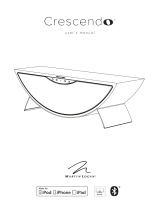 MartinLogan crescendo Manuel utilisateur
MartinLogan crescendo Manuel utilisateur
-
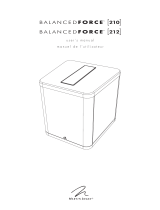 MartinLogan 210 Manuel utilisateur
MartinLogan 210 Manuel utilisateur
-
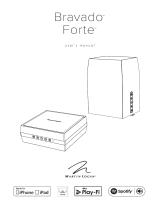 MartinLogan FORTE Manuel utilisateur
MartinLogan FORTE Manuel utilisateur
-
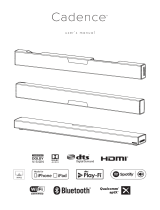 MartinLogan Cadence Manuel utilisateur
MartinLogan Cadence Manuel utilisateur
-
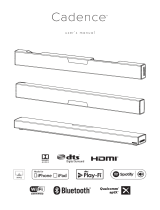 MartinLogan Cadence Manuel utilisateur
MartinLogan Cadence Manuel utilisateur
-
Klipsch G-17 AIR Manuel utilisateur
-
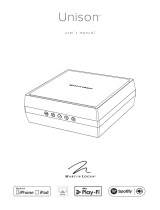 MartinLogan Unison Manuel utilisateur
MartinLogan Unison Manuel utilisateur
-
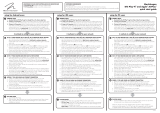 MartinLogan Cadence Guide d'installation
MartinLogan Cadence Guide d'installation
-
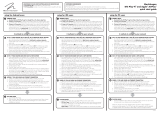 MartinLogan FORTE Manuel utilisateur
MartinLogan FORTE Manuel utilisateur
-
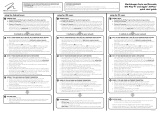 MartinLogan FORTE Guide d'installation
MartinLogan FORTE Guide d'installation




























































